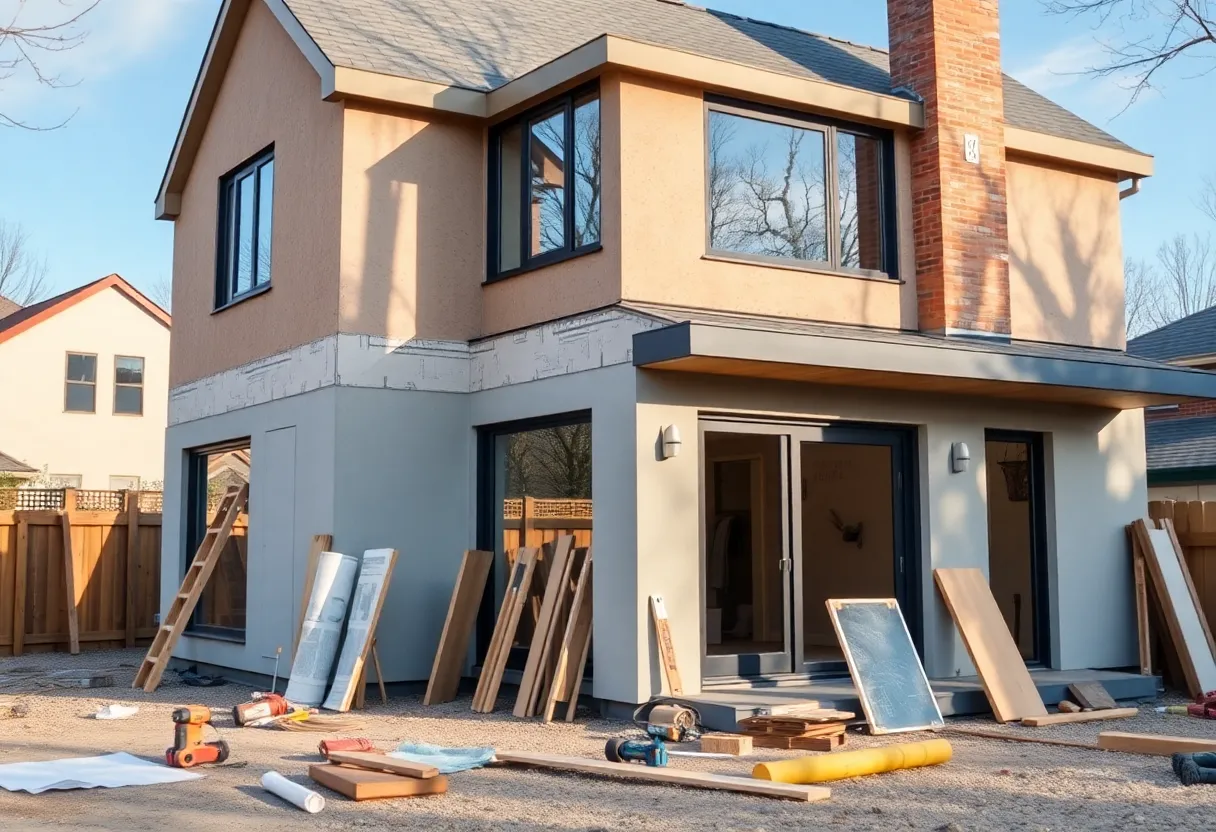What Are the Crucial Factors to Consider When Planning Your Home Addition?
Adding an extension to your home can significantly enhance yourLiving space, increase property value, and improve overall comfort. However, effective planning is core to a successful project. Thoughtful consideration of key factors ensures your home addition aligns with your needs, budget, and long-term goals. Here, we explore the essential aspects to evaluate during your planning process.
Assessing Your Needs and Goals
Before initiating any design or construction activities, clearly define your objectives. Are you looking for additional bedrooms, a larger kitchen, a home office, or a recreational area? Understanding the primary purpose shapes the design and scope of the project.
Prioritize functional requirements over aesthetics initially. This focus ensures the addition fulfills your daily needs, with aesthetics aligning later.
Establishing long-term goals is equally crucial. Will your family expand? Are you planning to sell the property soon? Answering these questions helps determine the size and scope of the extension.
Addressing these questions upfront minimizes costly modifications later and sets a clear path forward.
Conducting a Detailed Site Analysis
Property Layout and Topography
The physical characteristics of your property influence design possibilities. Step back to analyze terrain, slopes, and natural features. These factors impact foundation requirements, drainage, and construction methods.
Existing Structures and Boundaries
Review your current home’s layout and property boundaries. Identifying load-bearing walls, utility access points, and easements is vital. Make adjustments to avoid infringing on setbacks or violating zoning constraints.
Environmental Conditions and Sunlight
Assess sun exposure, prevailing winds, and shading patterns. Orientation can enhance energy efficiency, natural lighting, and comfort. Ensure your addition minimizes environmental impact and maximizes benefits.
Understanding Local Zoning and Building Regulations
Compliance is non-negotiable. Consult local zoning codes, building permits, and homeowner association rules. These set limits on size, height, setbacks, and land use.
Early engagement with zoning authorities expedites approval and avoids costly redesigns or legal complications.
Being aware of building codes and safety standards ensures your addition is durable, safe, and adheres to statutory requirements.
Design and Architectural Planning
Harmonizing with Existing Architecture
The new addition should complement your home’s style and character. Cohesive design maintains aesthetic harmony and increases curb appeal.
Interior Layout and Flow
Design with functional flow in mind. Pay attention to doorways, hallways, and shared walls. Consider privacy, noise control, and ease of access between spaces.
Future Flexibility
Incorporate adaptable spaces. Movable walls or multi-purpose rooms allow flexibility as your needs evolve over time.
Budget Planning and Cost Estimation
Establishing a realistic budget is fundamental. Include all costs: design fees, permits, material, labor, and contingency funds.
Obtain detailed cost estimates from reputable contractors. Comparing bids ensures transparency and helps identify financial constraints.
Maintain a contingency fund, typically 10-15% of the total budget, to cover unforeseen expenses.
Align your budget with your desired quality level and project scope to avoid overspending or compromises on essential features.
Selecting Qualified Professionals
Designers and Architects
Engage experienced professionals to develop detailed plans that meet your goals, comply with regulations, and optimize space utilization.
Contractors and Builders
Select licensed, reputable contractors with proven track records. Verify references and review past projects to assess quality.
Specialists
For complex projects, consider specialists such as structural engineers or environmental consultants. Their expertise ensures safety and sustainability.
Evaluating Construction Timeline and Phasing
Create a feasible timeline with your contractor. Consider factors like permit approval, material availability, and weather conditions.
Decide whether to phase the project or complete it in one continuous build. Phased approaches can spread costs and minimize disruption but may extend overall project duration.
Ensure that internal logistics and your lifestyle accommodate the construction schedule, reducing frustration and inconvenience.
Ensuring Structural Integrity and Safety
Adding space affects the existing home’s foundation and structural framework. Engage structural engineers early to assess and design necessary reinforcements.
Understand load-bearing requirements and potential impacts on existing systems. Proper planning prevents issues like sagging, settling, or safety hazards.
Compliance with safety standards, including fire safety, electrical, and plumbing codes, protects residents and property.
Environmental Impact and Sustainability
Prioritize environmentally friendly materials and energy-efficient systems. Incorporate features like insulation, high-efficiency windows, and sustainable materials to reduce ecological footprint.
Consider green building certifications such as LEED or similar standards that recognize sustainable practices.
Reduce waste by planning material quantities accurately and opting for recyclable or low-impact options.
Impact on Existing Utilities and Infrastructure
Assess how the addition affects water, sewage, electricity, and HVAC systems. Updates may be necessary to accommodate increased demand.
Coordinate with utility providers early to prevent service disruptions during construction.
Plan for the integration of new systems seamlessly with existing infrastructure for efficiency and reliability.
Planning for Future Maintenance and Durability
Choose durable, low-maintenance materials suited to your climate and usage patterns. Quality materials save costs over the long term.
Design with accessibility in mind for ongoing maintenance and repairs.
Incorporate warranties and service agreements with suppliers and contractors to ensure longevity.
Mitigating Disruption During Construction
Effective project management minimizes inconvenience. Clearly communicate timelines and expectations with contractors.
Organize access points and storage to keep your home livable during construction phases.
Prepare for possibilities of noise, dust, and limited access to certain areas. Precise planning reduces stress and delays.
Final Considerations and Long-term Planning
Reflect on the overall impact of your home addition.
Balance immediate needs with future adaptability and resale value.
Continually review plans and consult professionals to refine your project scope and ensure you meet your goals efficiently.
Conclusion
Planning a home addition involves meticulous evaluation of numerous factors. From understanding your needs and assessing site conditions to navigating regulations and designing for sustainability, each element plays a vital role. Maintaining focus on core facts and avoiding unnecessary complexities ensures a smooth process. Emphasize clarity, professionalism, and thoroughness throughout to realize your vision successfully. When executed with foresight and precision, your home addition becomes a valuable, functional enhancement aligned with your long-term aspirations.
Author: STAFF HERE BALTIMORE WRITER
The BALTIMORE STAFF WRITER represents the experienced team at HEREBaltimore.com, your go-to source for actionable local news and information in Baltimore, Baltimore County, and beyond. Specializing in "news you can use," we cover essential topics like product reviews for personal and business needs, local business directories, politics, real estate trends, neighborhood insights, and state news affecting the area—with deep expertise drawn from years of dedicated reporting and strong community input, including local press releases and business updates. We deliver top reporting on high-value events such as the Baltimore Book Festival, Preakness Stakes, and Artscape. Our coverage extends to key organizations like the Baltimore Chamber of Commerce and Visit Baltimore, plus leading businesses in shipping and healthcare that power the local economy such as the Port of Baltimore and Johns Hopkins Medicine. As part of the broader HERE network, we provide comprehensive, credible insights into Maryland's dynamic landscape.





